2024-2007
2024 Nisei Week Grand Parade
 Sunday, Auguast 11, 2024
Sunday, Auguast 11, 2024
2024 二世週祭グランド・パレード

2023 Nisei Week Grand Parade
 Sunday, August 13, 2023
Sunday, August 13, 2023
2019 Hollywood Christmas Parade
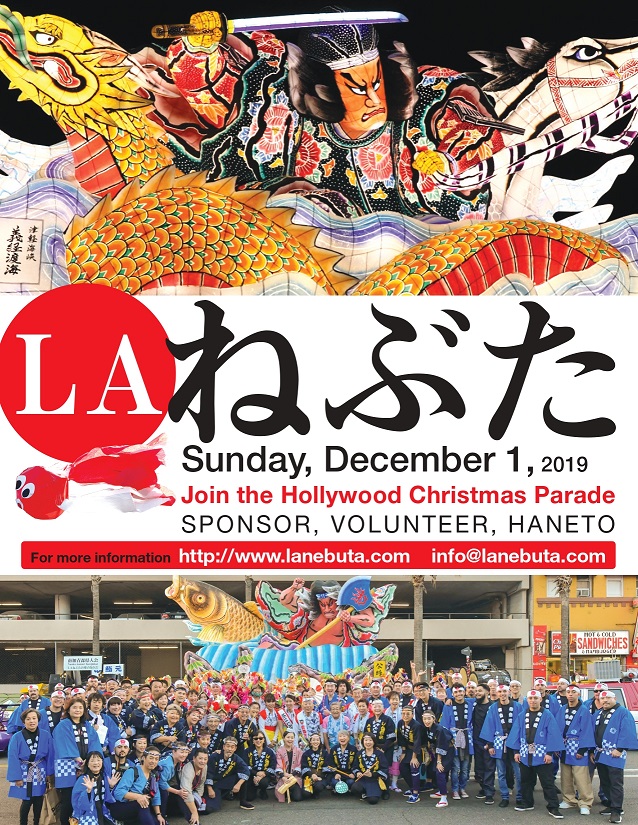 Sunday, December 1, 2019
Sunday, December 1, 2019
Los Angeles County Museum of Art
 Special Performance @ Los Angeles County Museum of Art
Special Performance @ Los Angeles County Museum of ArtSunday, November 17, 2019
2019 Niseiweek Grand Parade
 Sunday, August 11, 2019
Sunday, August 11, 2019
2018 Hollywood Christmas Parade
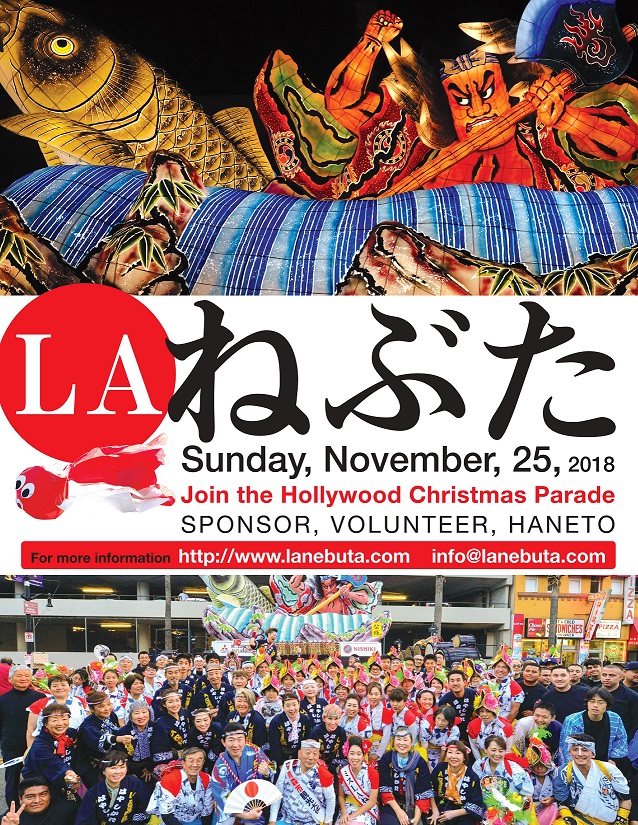 Sunday,November, 25, 2018
Sunday,November, 25, 2018
2018 Nisei Week Grand Parade
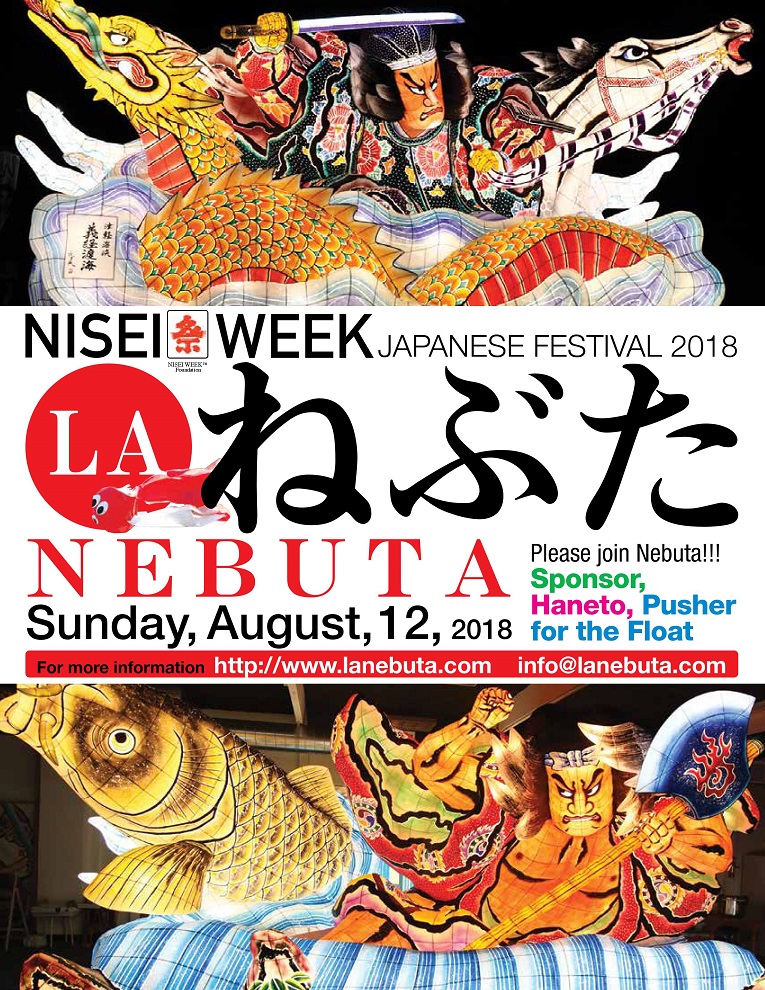 Sunday, August 12, 2018
Sunday, August 12, 2018
2017 Hollywood Christmas Parade
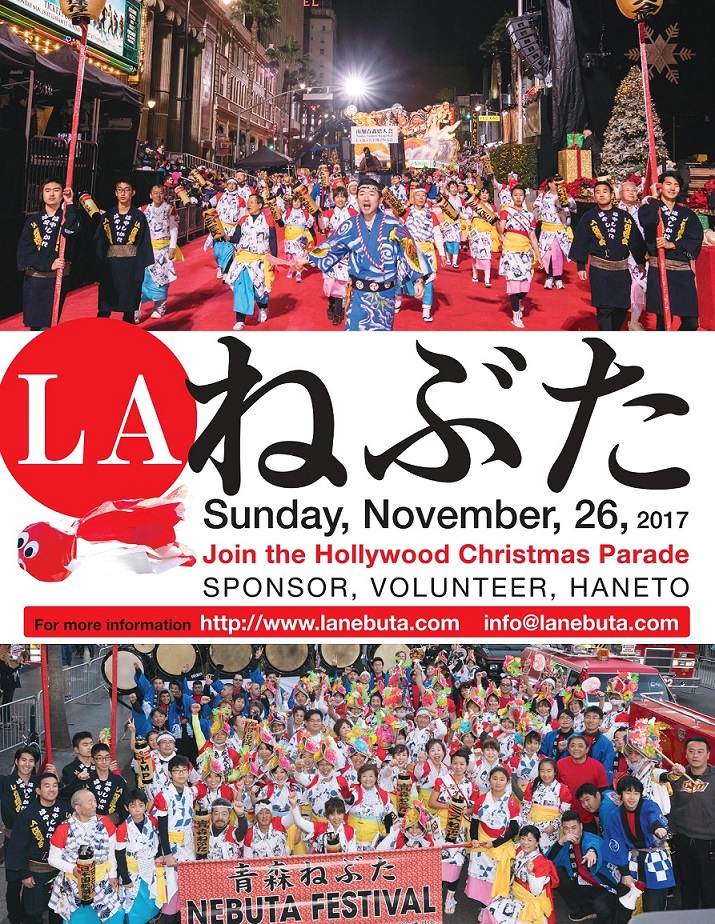 Sunday, November 26, 2017
Sunday, November 26, 2017
2017 Nisei Week Grand Parade
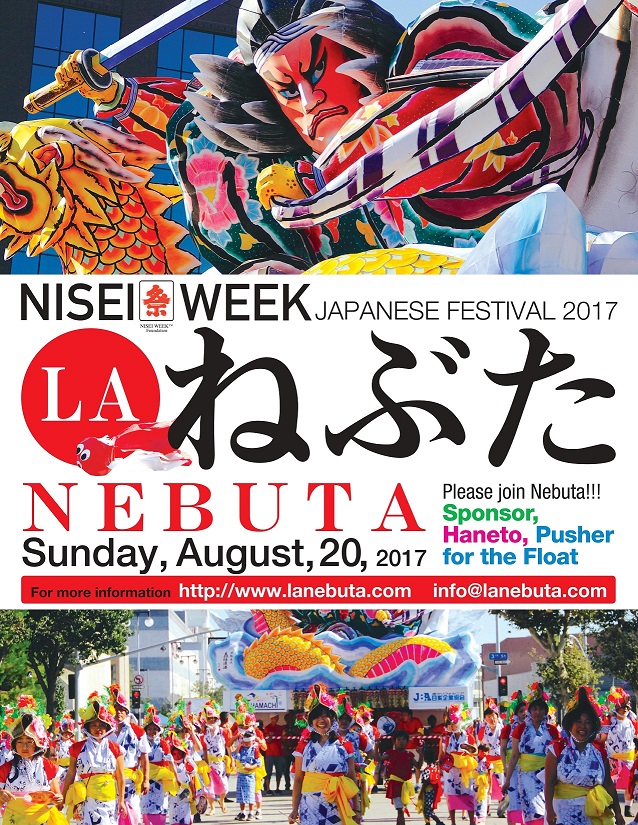 Sunday, August, 20, 2017
Sunday, August, 20, 2017
2016 Nisei Week Grand Parade
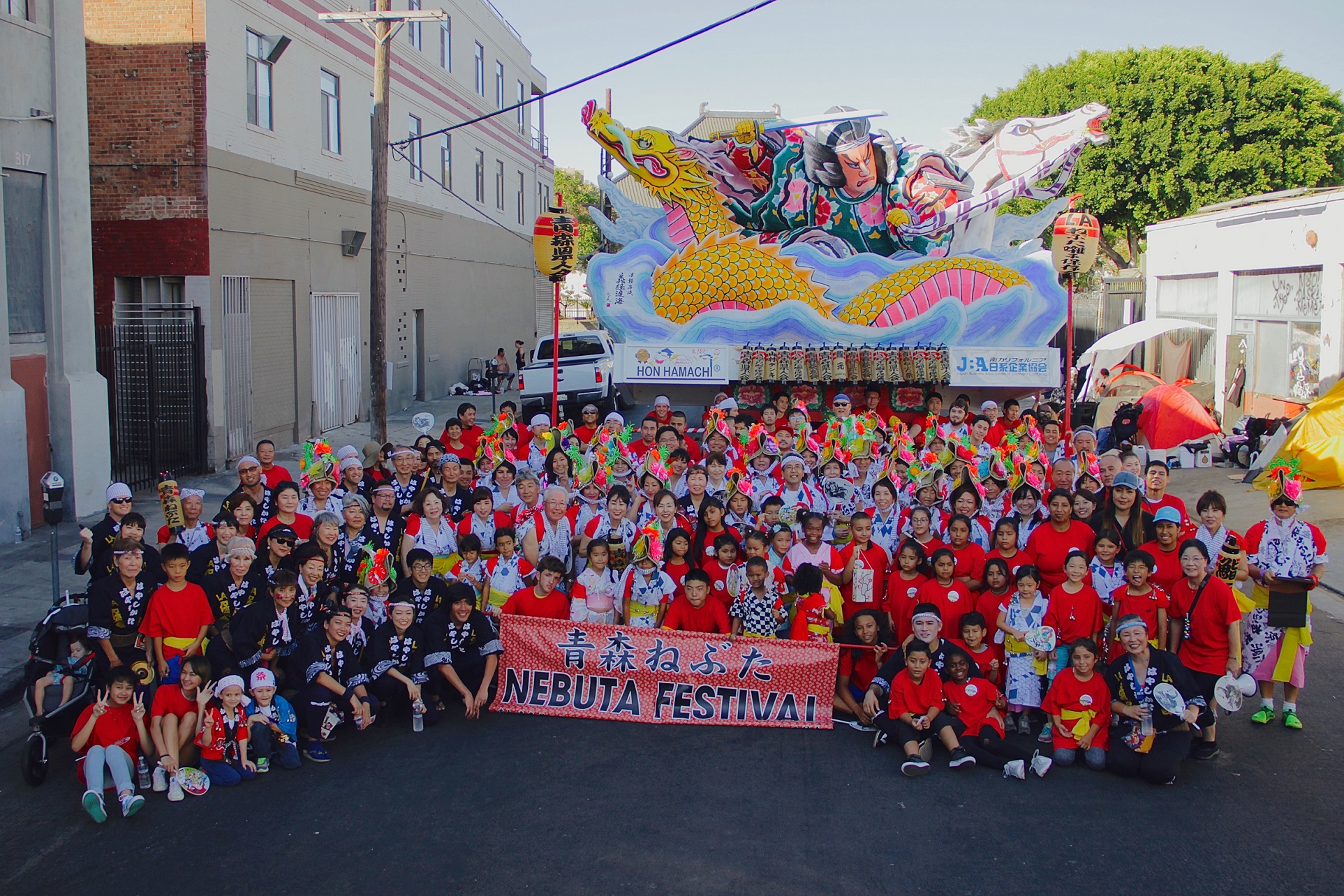
2015 Hollywood Christmas Parade
 Sunday, November 29, 2015
Sunday, November 29, 2015
2015 Niseiweek Parade
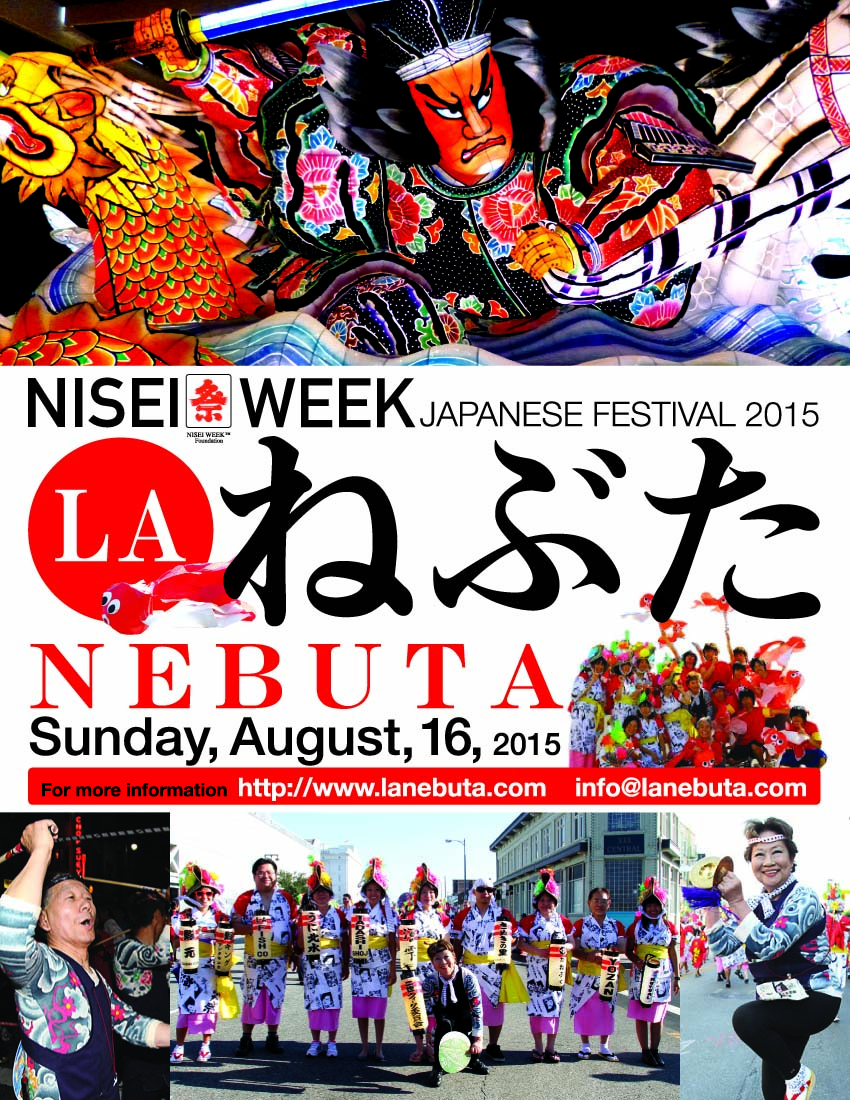 Sunday, August 16, 2015
Sunday, August 16, 2015
2015
 津軽海峡 義経渡海
津軽海峡 義経渡海“Tsugaru Straits, Yoshitsune Crossing the Sea”
At very end of the 12th century, two samurai clans, Heishi and Genji had a large battle.
In the end, the Genji clan, led by Minamoto no Yoritomo, demolished the Heishi and Yoritomo became a Shogun. He was not the first Shogun, but he was the first Shogun to organize his own government: a Shogunate. It was the beginning of the age of the samurai.
Yoritomo had a younger brother named Yoshitsune. He is one of the most popular samurai heroes of Japan, a great commander in chief and a very clever militarist. As the Shogunate government started to function, Shogun Yoritomo began to suspect Yoshitsune of planning to overtake his power.
Yoshitsune was an honorable man who admired his older brother and he hated this situation. He escaped with a few vessels to the north and asked the Fujiwara clan who ruled northern Japan for protection. The clan had protected Yoshitsune from the Heishi clan when he was a young boy. However, Yoritomo sent a party to find and kill him, and at the same time, threatening the Fujiwara clan to give up Yoshitsune to the Shogunate.
Orthodox history says that Yoshitsune killed himself in the Koromogawa area of Hiraizumi located in the present-day Tohoku area of Japan.
However, in various areas of northern Japan -- Iwate, Aomori and Hokkaido -- there are many legends existing that say that Yoshitsune survived the battle and escaped further north.
The legend goes;
When Yoshitsune reached the Northern tip of Japan’s Main Island, the rough waves at the Tsugaru Straits made it look impossible to cross. In desperate attempt, Yoshitsune sat down on the rocks at the shore and started chanting prayors to Kwannon Goddess asking for her mercy.
At the dawn of the fourth day, a grey haired old man in white robe carrying a long stick appeared in from of Yoshitsune and told “In response to your desperate request, I will give you three dragon horses with divine powers. Go sross the straits on these dragon horses!”
Yoshitsune in tears chanted prayors in appreciation and safely crossed the straits.
He then moved North to Hokkaido and from there to Manchuria, then further north to Mongolia and organized a nation, calling himself Genghis Khan. It was 1206 that Genghis Khan, aka Temu-jin, ascended the throne of the Mongolian Empire.
2011-13
2009-2010
Nebuta in 2007 Nisei Week was perfectly successful.
LA community requested us to continue the Nebuta event in Los Angeles for taking over the experience, emotion and impression.
“Kodomo-Nebuta” was held 2009 under that background.
Kodomo-Nebuta is a small Nebuta float, which is created by smaller group in Aomori. It is designed, created and played only by small group.
It would be a good experience for our community to plan, create and perform a festival.
It is small, but “Home-Made” here in Los Angeles, but grows up in this community oversea from Japan.
2007
Shingen
Nebuta first appeared in Little Tokyo on August, 2007
On August 19, 2007, Nebuta first appeared in Los Angeles Little Tokyo. This was the first landing in the mainland U.S.
As the final float of Nisei Week Parade, 17 ft high huge Nebuta Float “Samurai Warrier” showed up illuminated with over 600 lights in the evening darkness.
Nebuta was created by Mr. Hiroo Takenami, a 20 years-career master artist of Nebuta Float creation. The float was shipped to Los Angeles in pieces.
On Nebuta Parade, more than 200 dancers “HANETO”, “taiko” drummers and Japanese flute players accompanied the float.
Search by words like “Nebuta Los Angeles ” in websites such as “You Tube”, then you will be able to realize the impact Nebuta has given to the attendants and community.
Twugaru Neputa
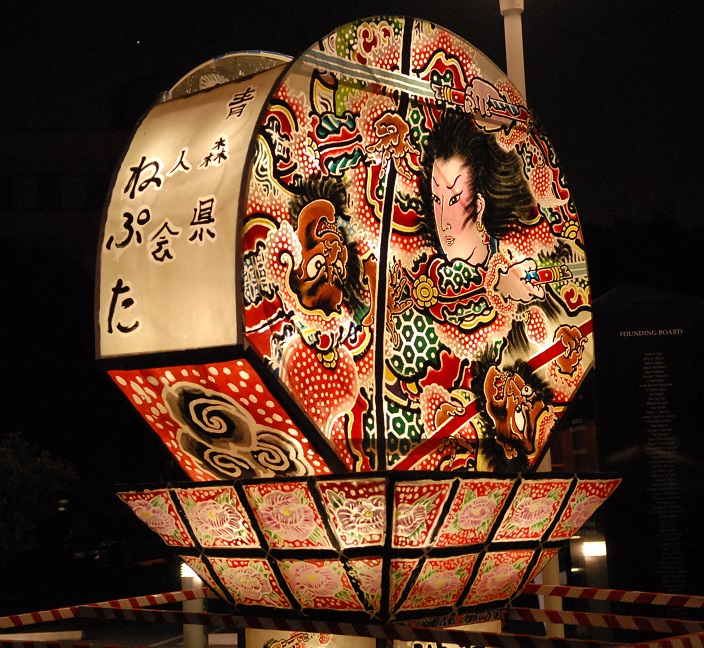
LA School